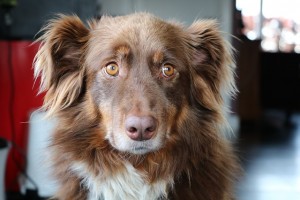When a dog feels stressed or anxious it’s body gets ready to respond. This is commonly known as the fight or flight response. The sympathetic nervous system causes the pupils of the eyes open up to allow more light in and improve vision, breathing speeds up to get more oxygen into the body, blood vessels widen, to get more blood to the muscles, urination and defecation speeds up to make the body lighter and digestion slows causing feelings of nausea. These reactions help the dog defend itself when in danger by attacking and removing the threat or by running away from the threat. Once the danger has passed the parasympathetic nervous system kicks in and brings the body systems back to normal functioning. These processes are beyond the dog’s control and happen automatically.
Some dogs are more prone to anxiety than others and events that have happened to them in the past can cause them to become over responsive to certain events. Repeated episodes of anxiety or prolonged feelings of anxiety can have serious health implications. These include, heart problems, digestive difficulties, weight control problems, and skin disease. It is therefore important to help dogs who are anxious to feel safe and secure in order to reduce the stress response and we need to provide them with methods to calm themselves when they do feel stressed in order to lower stress levels quickly.
Causes of stress can include
- depression
- separation
- loneliness
- boredom
- frustration
- noise intolerance eg fireworks
- fear of other animals or humans
- fear of owner’s anger
- uncertainties in new life situations eg new home, new baby, new dog
- hunger
- illness
- injury
- cold
- heat
Signs of stress
Physical signs can include
- drooling
- lip licking
- yawning
- trembling
- panting
- dark eyes
- uncontrolled urination
- diarrhoea
- vomiting
- loss of appetite
Behavioural signs can include
- barking
- digging
- pacing
- whining
- urine marking
- difficulties or relapse in house training
- destructive chewing
- atypical aggression
Fight or flight are not the only two responses to stress we sometimes see in dogs. Two more include freeze and fool about. Some dogs shut down and refuse to move. They sink to the floor and cannot be enticed to move, take treats or interact in any way. Others display behaviour which can seem like playing such as running in circles with a toy or being overly friendly and wanting lots of fuss and attention. This can actually be a distraction technique so they don’t have to deal with whatever is actually worrying them.
Click here for ways to reduce stress and anxiety


No comments yet.